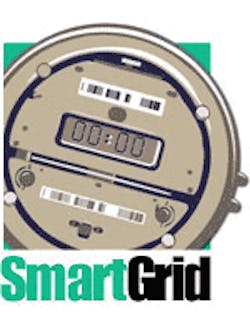One component of the Smart Grid communications system is the connection from the AMI meter back to the utility. This link enables the utility to read your meter, gather other usage data, and send command and control signals and energy pricing information to the HAN. As with the HAN, both wired and wireless options are under consideration. The utility company will select the technology to match the meter’s connectivity. Here is a quick look at some of the possibilities for what has been called the neighborhood-area network (NAN).
• Broadband connection: Most homes now have an Internet connection via cable TV or DSL. It also could be used for backhaul. Security is an issue.
• Dial-up: Using the existing phone lines is an option. Most homes still have a plain-old telephone service (POTS) connection, and it’s more than fast enough for this application.
• Cellular: With cellular coverage almost everywhere, this seems to be a good choice. With it, the utility won’t have to build its own network. Inexpensive machine-to-machine (M2M), GSM, GPRS, and low-rate cdma2000 modules are ideal for this service. Most carriers have already implemented M2M services.
• WiMAX: It’s faster than it needs to be, but it provides lots of room for growth. It’s also low-cost and readily available. Some utilities already use it.
• Proprietary: Some of these solutions use the 902- to 928-MHz industrial, scientific, and medical (ISM) band, which offers low cost and long range. Silver Springs Networks has already deployed systems in some places.
• Wi-Fi: It’s certainly a proven wireless technology that could work, though it isn’t optimized for this kind of service. It’s probably a long shot.
• 802.15.4g: This new IEEE standard is in the works to create a smart utility metering network or NAN optimized for backhaul. There’s no final spec yet, but it could be available late this year. Its frequency range could be 700 to 1000 MHz or even 2.4 GHz with a data rate at least 40 kbits/s to 1 Mbit/s. It’s probably some form of frequency shift keying (FSK), and it’s designed to serve tens of thousands of homes in dense urban areas.
• Powerline: The lines are already in place, so why not? Some form of Broadband over Power Line (BPL) with orthogonal frequency-division multiplexing (OFDM) is an obvious choice for an electric utility. BPL has its problems, but there’s no doubt some utilities will go this way.
• MBUS: This European standard for smart-meter backhaul uses the European 868-MHz band with 2-FSK modulation to achieve a reliable link from the meter to the utility facility. Its typical baud rate is 32.768 kbits/s, but for some modes it goes up to 112 kbits/s.
• S-FSK: Shift or spread FSK is a form of frequency shift keying that uses spread spectrum to add robustness to the transmission. Designed for backhaul in the CENELEC A-band, it uses a kind of frequency-hopping scheme to make the transmission more resilient to interference. Data rate peaks out at 2.4 kbits/s, but with forward error correction (FEC), it’s very reliable for meter reading. AMIS, Freescale, ON Semiconductor, STMicroelectronics, and Texas Instruments make chips for this technology.
About the Author

Lou Frenzel
Technical Contributing Editor
Lou Frenzel is a Contributing Technology Editor for Electronic Design Magazine where he writes articles and the blog Communique and other online material on the wireless, networking, and communications sectors. Lou interviews executives and engineers, attends conferences, and researches multiple areas. Lou has been writing in some capacity for ED since 2000.
Lou has 25+ years experience in the electronics industry as an engineer and manager. He has held VP level positions with Heathkit, McGraw Hill, and has 9 years of college teaching experience. Lou holds a bachelor’s degree from the University of Houston and a master’s degree from the University of Maryland. He is author of 28 books on computer and electronic subjects and lives in Bulverde, TX with his wife Joan. His website is www.loufrenzel.com.
